Early Season Bugs
Midges
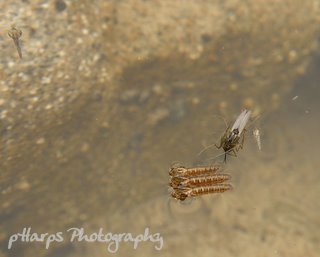
March-November
Order: Diptera
Other Names: Chironomid, Blood midges, can include blackflies, mosquitoes, and craneflies.
Midge hatches can occur through out the winter in Southern Alberta but typically trout will only rise for them consistently from April to November. The big thing is that midge larva and pupa are always in rivers and lakes, always available to trout. Keep a handful of larva, emergers, and adults in you box at all times.
Patterns:
Larva: Brassie, Jujubee Midge, Thread Midge (black, brown, tan, rust, red, yellow, 18-24).
Emerger/pupa: Mighty Midge Emerger, Soft Hackle, Z-lon midge, Serendipity (black, brown, tan, rust, 18-24).
Adult: Griffith’s Gnat (midge cluster) (Peacock and Grizzly, 14-18), Sprout (black, brown, 18-24).
Winter Stoneflies
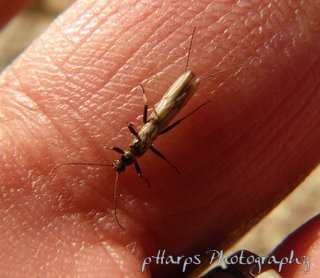
March-May
Order: Plecoptera
Family: Nemouridae, Capniidae, or Leuctridae
Other Names: Little Winter Black Stonefly, Small Brown Stonefly,
A small stonefly with sporadic hatching. The nymphs are available from February through April and the adults can be seen on snowbanks and the river’s edge from March to May.
Patterns:
Nymph: Bird’s Nest, AP Nymph, Dark Hare’s Ear (brown, 14-18).
Adult: Stimulator, Elk Hair Caddis (black, brown, 16-20).
Snow Sedge
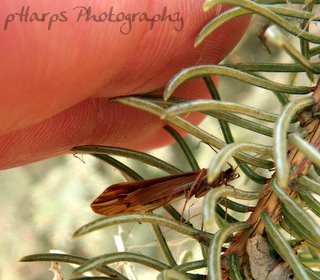
April-May
Order: Trichoptera
Family: Psychoglypha
Other Names:
The Snow Sedge are red/orange and can be over 2cm long. They mature over the winter and emerge in the spring. They are often overlooked, but their Larva are very important late winter to early spring food for trout. They are present in many types of water bodies, making them an important addition to any box.
Patterns:
Larva: Cased-Caddis (brown, 6-10), Brown Hare’s Ear (6-10).
Pupa: LaFontaine’s Deep Sparkle Pupa (brown, 6-10).
Adult: Stimulator, Elk Hair Caddis (orange, brown, 10-14).
Blue-Winged Olive Mayflies
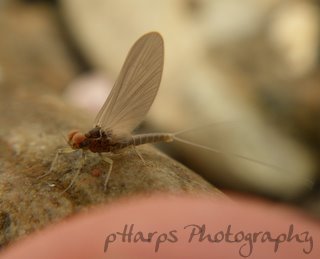
Mid-April to June and September to November
Order: Ephemeroptera
Family: Baetis
Other Names: Baetis, BWO,
The Blue Winged Olive is an important early and late season mayfly for anglers. It is unpredictable but often provides the first and last “fix” for
dry fly fishing.
Nymph patters should be tied slender as the Baetis nymphs are streamlined swimmers. BWO’s swim to the surface and hatch while they float downstream.
A wet humid day will delay the hatch resulting in a longer opportunity for trout to take them on the surface, and therefore a better chance for the dryfly
angler. Duns are typically on the water from 11AM to dusk. Spinners will return to the river and crawl down rocks to lay eggs under water.
Patterns:
Nymph: Hare’s Ear Nymph, Pheasant-tail Nymph (slim, brown, olive (14-20).
Emerger: BWO Quigley Cripple, Soft-Hackle (pale yellow, light brown, olive-tan, 16-24).
Dun Adult: Parachute BWO, BWO Sparkle Dun, Thorax Dun (olive-brown body, grey wing 16-24).
Spinner: Rusty Spinner, Sunk Soft-hackle (Rust or Brown 16-22).
Skwala Stoneflies
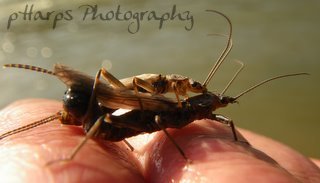
April-May
Family: Skwala
A mid-sized stonefly that shows up in mid April. The nymphs are available from February through May and the adults can be seen crawling up rocks and skittering across the river from mid-April through May. These are the first bugs that can be imitated with big foam patterns!
Patterns:
Nymph: Kaufmanns Stonefly Nymph, AP Nymph, Brook's Stone (brown, 6-10).
Adult: Stimulator, Sofa Pillow, Chubby Chernobyl (brown-olive, tan wing 8-12).
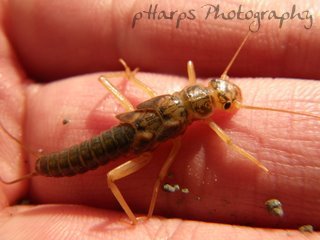
More to come...